Yesterday, yet another shoe fell in the ongoing saga of Ohio corruption.
The federal indictment announced yesterday lays out the breathtaking (alleged) facts starkly, with damning supportive materials: An insider energy utility lobbyist gets paid a hefty sum—$4.3 million—by a large utility (which later admitted it was indeed a bribe) shortly before being tapped to run Ohio’s utilities commission (PUCO), with an understanding that this insider will do what they ask (“as requested and as opportunities arise”) once he’s assigned that oversight role. And…he later does what they ask in events that ultimately amount to the largest bribery scandal in Ohio history.
Here is how the indictment presents the alleged facts:
Think about these alleged facts: A utility hand-picking and paying a lobbyist with $4.3 million because he oversees the body that regulates it. That is as corrupt gets. And so damaging to the public interest in so many ways—from how much we pay in rates to how we compete in the 21st century.
But the most damning part of the indictment comes after these facts. And brings some other important people into this conversation. People far better known than the guy indicted yesterday, whose name is Sam Randazzo.
The most damning part is the TIMELINE of how it all went down, which begs one enormous ($4 million?!) question:
The Damning Timeline
First, take a look at this document:
So the timeline makes clear that on December 17 and 18, 2018, Sam Randazzo communicates about the vacancy on the utility commission, then sends a message detailing $4.3M in payments he wants made from 2019-2024.
Then look at what happens next:
So….within a day of the message from Randazzo about the payment, the executives respond that they will pay the entire $4.3M right away. Only 13 days later(!)—Dec. 31–the executives send him the entire $4.3M.
Two days later, Randazzo receives it. Happy New Year!
So—the payment is not only offered but fully paid.
Now look at this document:
That’s right—Randazzo doesn’t even apply for the position with the utility commission until weeks later—on January 17!
Think about that: the “Executives” paid Randazzo $4.3M—both agreeing to and letting the full amount out the door—in December. Not only before he was named to lead the utility commission, but before he even applied.
The $4.3M Question: How Did They Know?
Now, to be clear, a bribe is a bribe no matter what. But paying him before he even applies for the position begs the obvious question: how were they already so confident he’d get the job—before he even applied for it—that they sent him $4.3 million in advance?
Were they really willing to part with $4.3 million—not only as a promise for later, but actually shipping it out the door—on a hope that he’d get picked later? That his resume would simply rise to the top? That his application would impress or that he’d nail the interviews?
Or was someone on the inside, or at the top, of the State’s selection process already giving them assurances—assurances so secure that they were that comfortable parting with $4M?
In other words, did they know parting with the $4.3M wasn’t a risk at all? Because it was already a done deal? Before he ever applied?
Since most entities aren’t willing to place $4.3 million wagers without knowing the odds, common sense answers the question.
But in this case, that common sense is supported by numerous records:
The Answer, with Receipts
Who are the key decision makers for an appointment such as this? The newly elected Governor and Lt. Governor, that’s who.
And who is also all over the broader timeline of events taking place when the payment and appointment are made? Let’s take a look:
Shortly after winning their close race for Governor in November 2018, Mike DeWine and Jon Husted share dinner with First Energy executives, including one directly involved with the bribe. Afterward, the First Energy CEO sends Randazzo a text “indicating they discussed the open PUCO seat,” and that they discussed Randazzo in particular with DeWine and Husted.
Randazzo later testified publicly about who “recruited” him to serve in the PUCO role: “He specified during the confirmation hearing that Husted and Laurel Dawson, DeWine’s chief of staff, were among those who helped recruit him.” (Husted, as Speaker of the Ohio House, had also recruited Randazzo to be on the commission years before (2007) as well.)
At one point, as they are texting about what becomes a two-appointment plan in January, one of the executives messages another that “Four people in [State Official 1] world” know about the plan. “State Official 1” is Governor DeWine.
Finally, when the appointment runs into trouble for a few moments because the payment to Randazzo goes public, the executives text one another that they dodged a bullet. Why? Because they “[f]orced [State Official 1/State Official 2] to perform battlefield triage.” Again, State Official 1 is DeWine. State Official 2 is Husted. They performed “triage” to save the appointment of Randazzo only weeks after he received the $4.3M. Phew!
I think this is what we call a pattern:
From beginning to the final appointment, DeWine and Husted are intimately involved. Which would seem to be exactly why the First Energy executives were so certain Randazzo would be selected—$4.3 million dollars certain—before he even applied.
And…It Worked
And by the way, as bad as all this looks, it only gets worse. Because as the indictment explains, Randazzo would indeed ultimately ensure that the legislation at the heart of the entire scandal did make it:
And speaking of “battlefield triage,” at one point as the ultimate bill is being debated, DeWine (State Official 1)’ s team even went so far as to schedule a flight for a legislator on the Governor’s plane to make sure they had enough the votes that were needed for passage. Ultimately, they used commercial.
Did I tell you this was a damning timeline, or what?
Now, can we please not allow Governor DeWine and Lt. Gov Husted to keep saying they knew nothing about any of this?
They clearly have a lot of questions to answer.
Ask them. And keep asking.

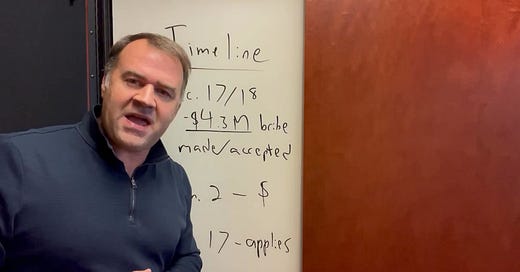


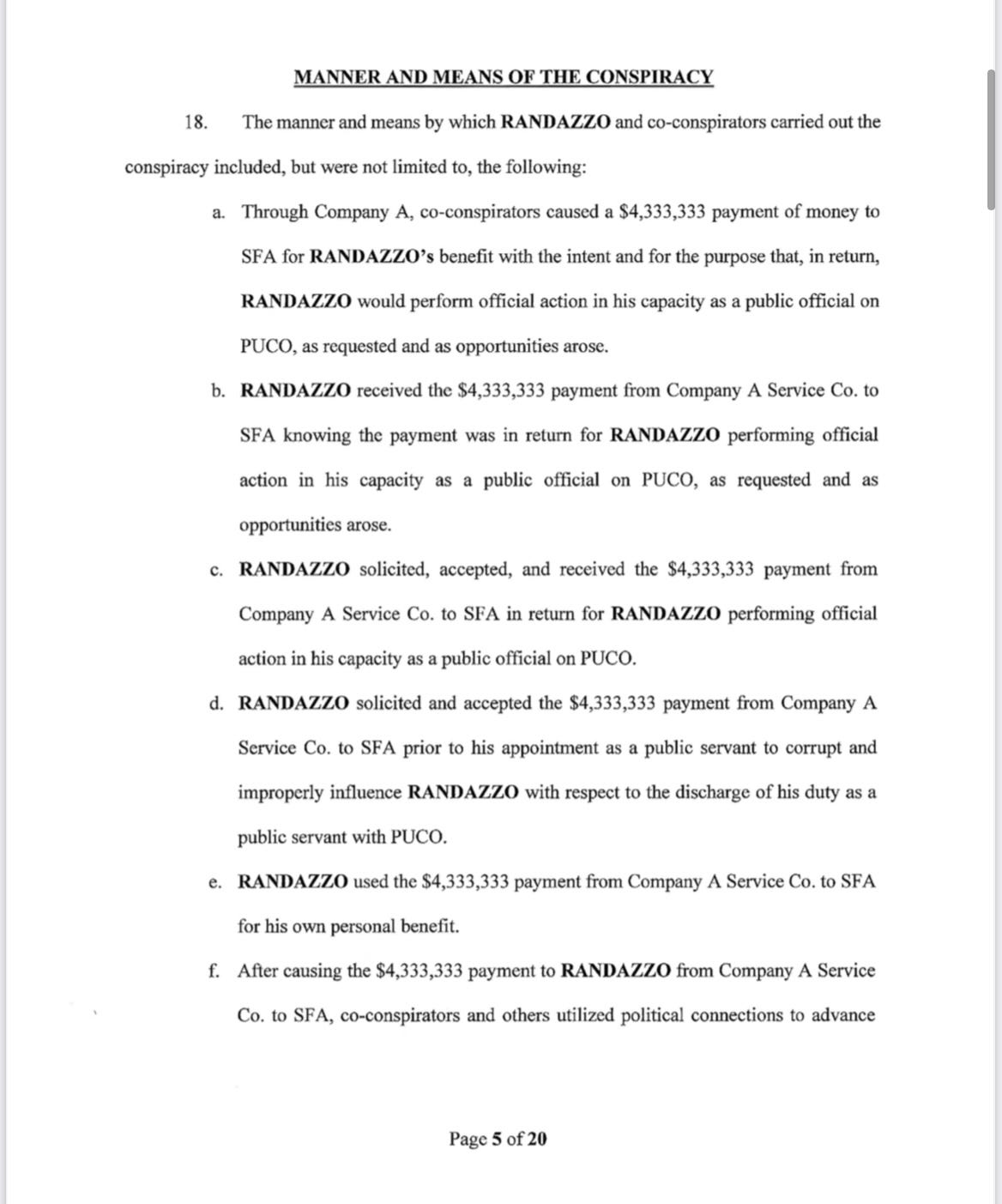
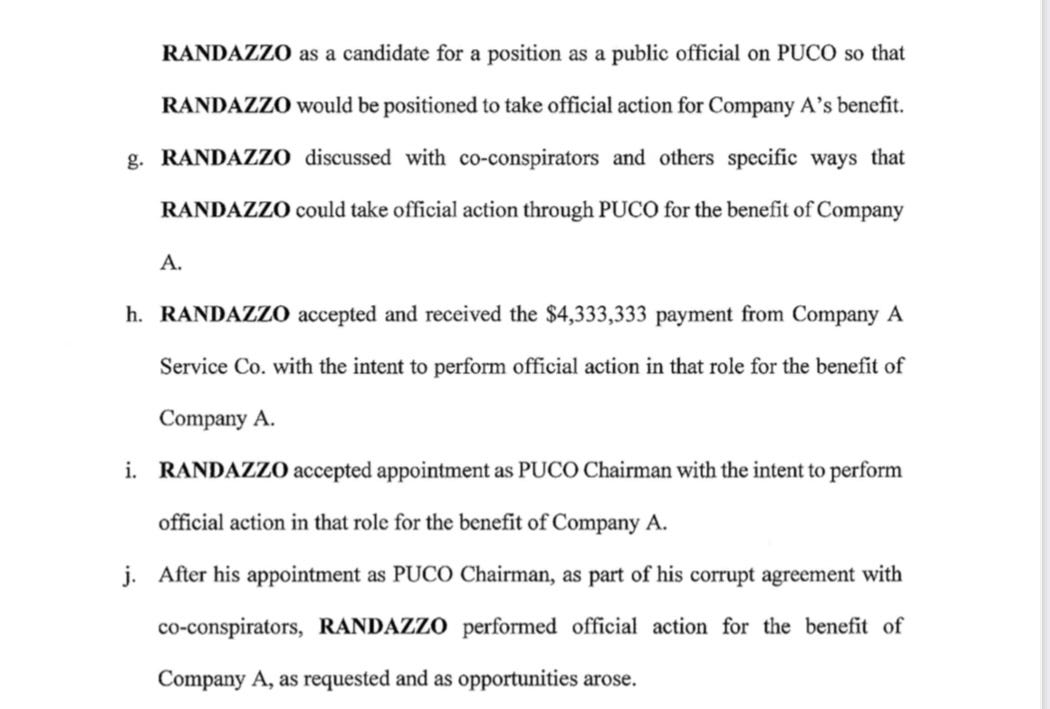
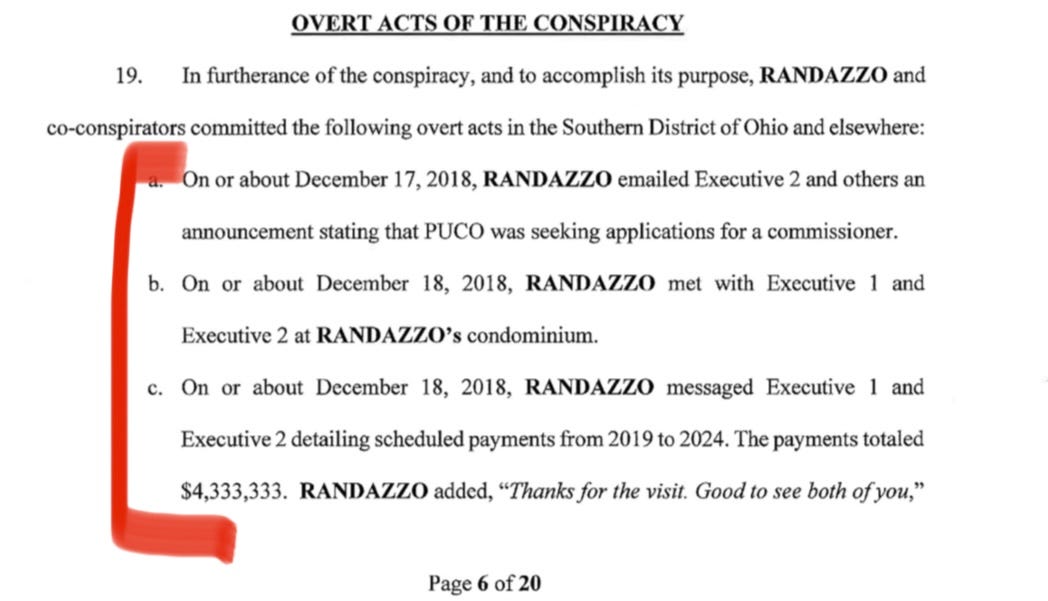
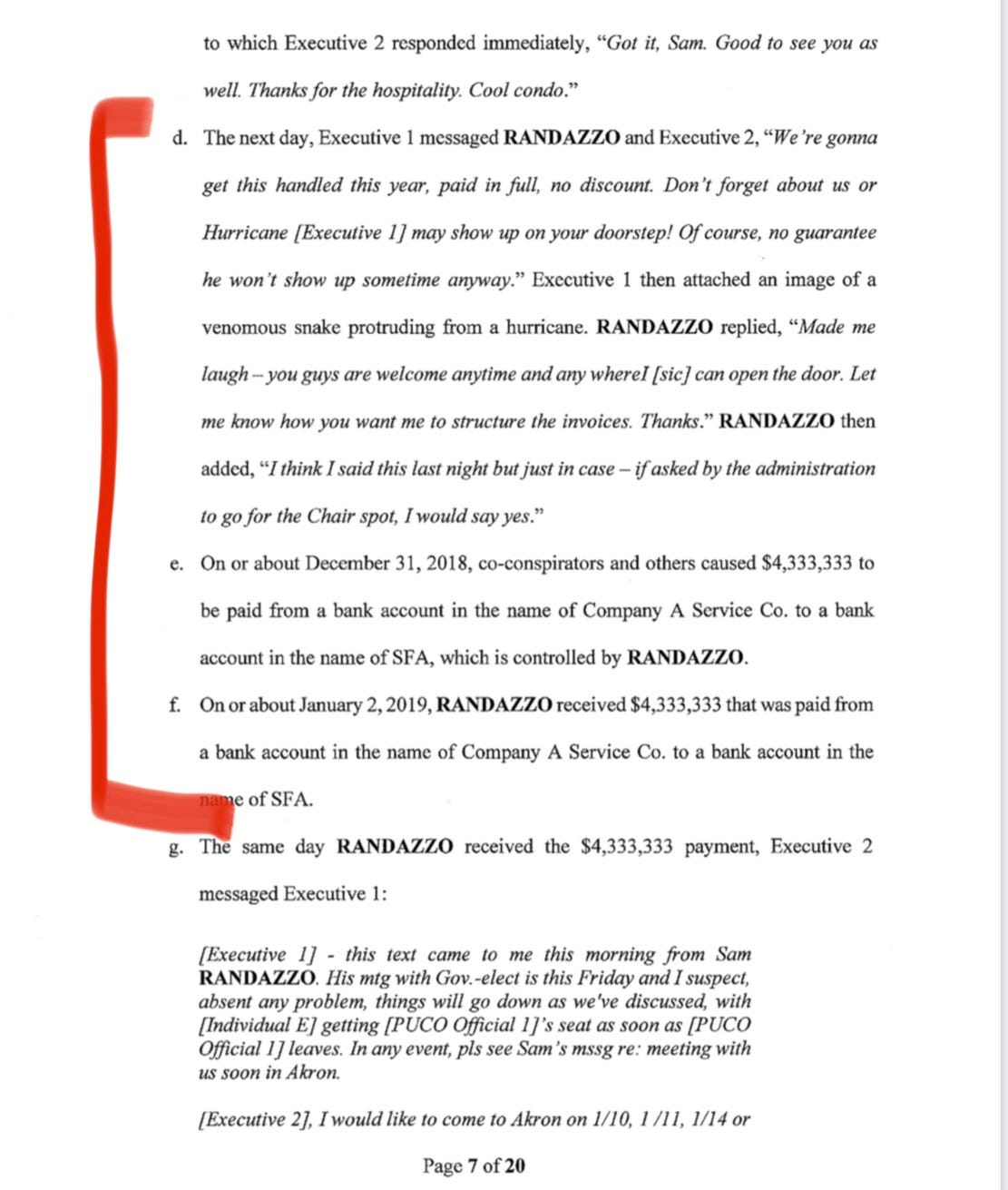



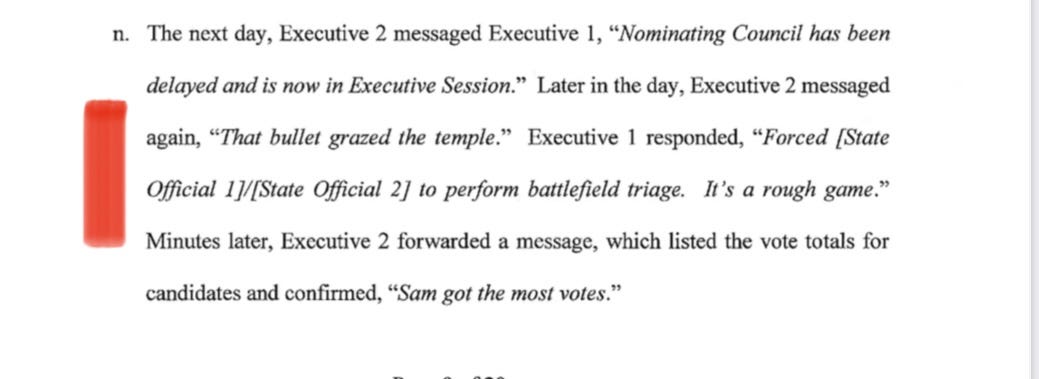
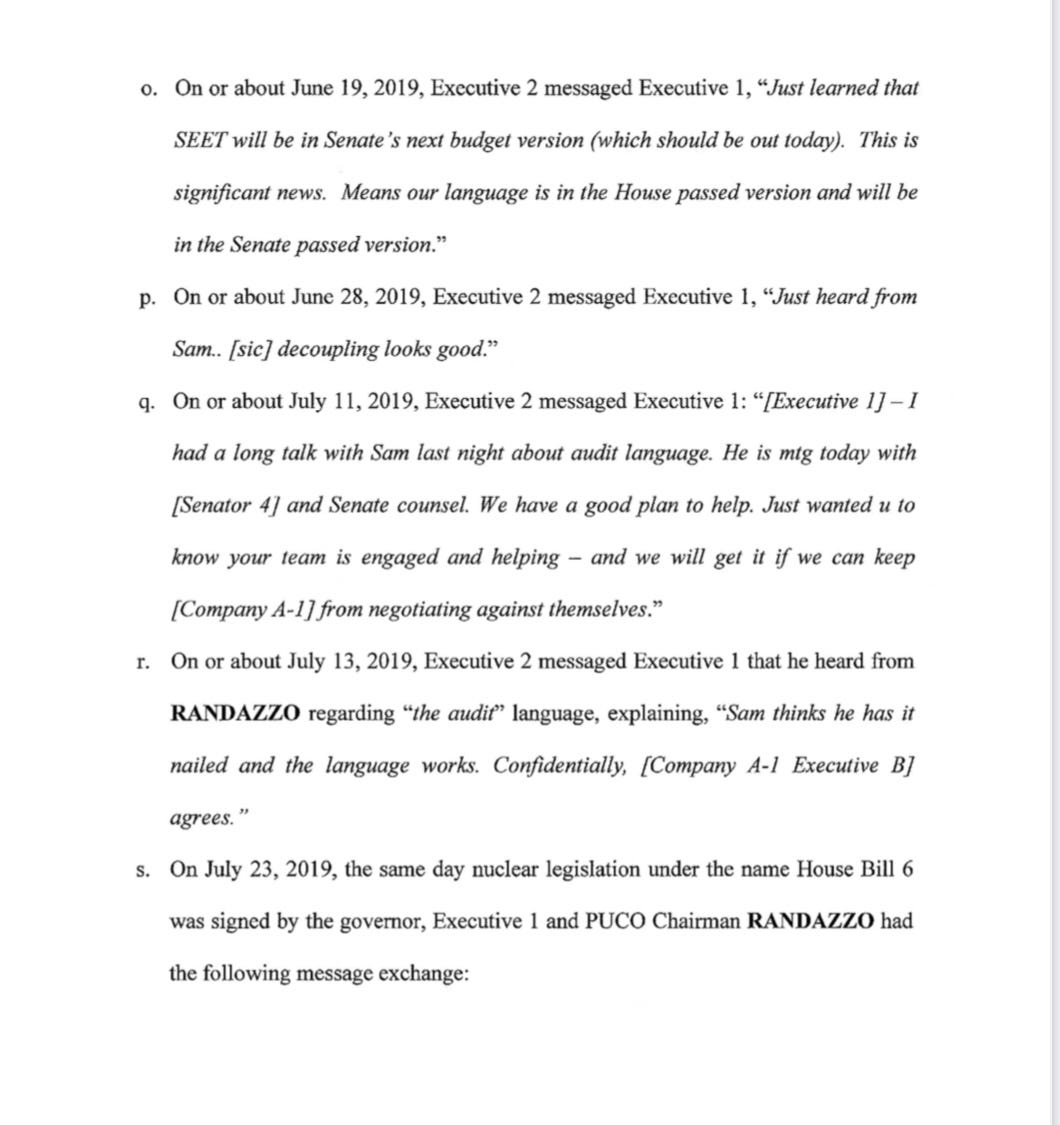









Share this post